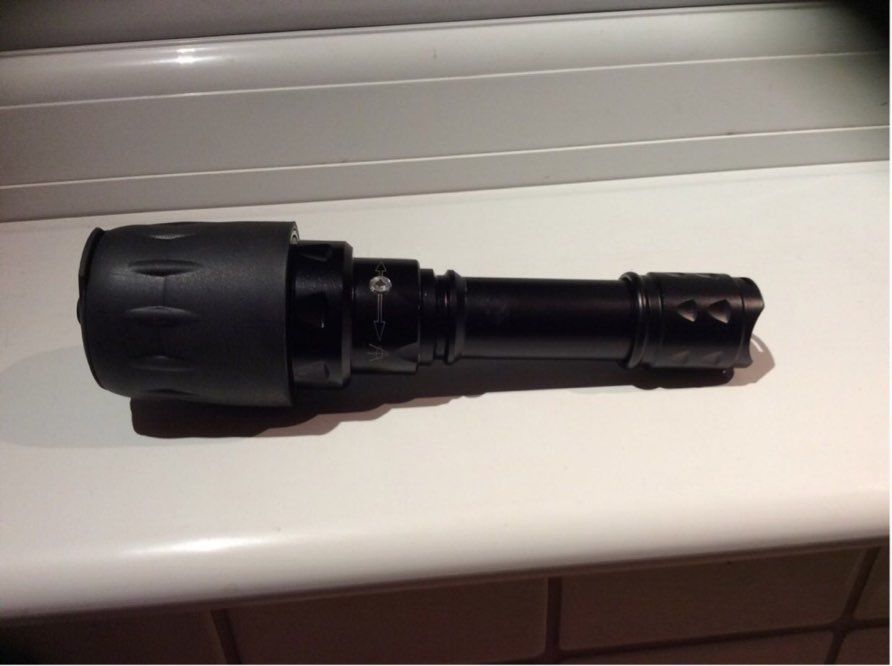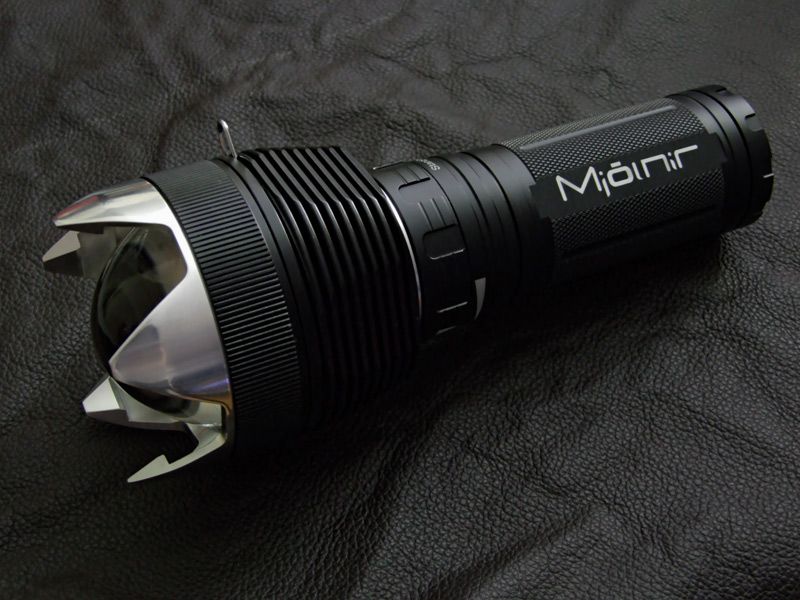@enderman…
try to appreciate, i spent most of my life relatively uninterested in photography, beyond if i needed to take apicture? i wanted a camera. i was always fascinated by japanese tourist cameras, as we called them in the old analog days… but, as a mechanical curiosity to me only. if you had one? i wanted to touch it, i wanted to play with the focus and be allowed to snap a pic.
i was always at these times, curious of what “the weird controls were”. its unexplainable to a complete camera noob. they would set the shutter and iris control? i was allowed to “play the focus” and snap my few pics.
then came the night vision projects? LMAO. i had to jump INTO this, and unfortunately? i suddenly hada burning NEED to understand as much as i could about the math of optics, if i was to design something, to uncover something. i had to “grok” the entire system in as much mathematical model as i was able to.
to be into night vision though? is to be into focusing flashlights, though. suddenly? i had to learn about “zoomies”. how to mod a regular zoomie into one. how to make it better. which lens to use… i devised strategies, both mathematical and practical hand tuning… to construct 2 lens zoomies. i can make a “true zoom” zoomie.
i can do those things back into camera lenses too… it all related and intertwined.
my background in computer science and mathematics in a former life? allowed me to do this, and in a deeper, fuller way than the guys just building builds…
but, i “See” all this… for lack of no better WORD… “how” i see it… and i know that the f-number relates image brightness, and the same way translates into PROJECTED brightness. i achieved what i set out to try to do, to make a infrared flashlight that put my emitter, same one everyone else was using… to a distance record at that time. i achieved something for myself in my hobby field. i ended up with my very own “build” and i got to name it.
visible flashlights? being here? was at first, just a fluke., i was into this, only cause i needed tobe… but, you know, had to get just one LED visible flashlight, LMAO… caught the bug.
i can mathematically model a second lens onto any lens, thats imaging or zoomie, and pick my f-number and focal length? practically at will… nd its only possible thru math, and an understanding of the importance of what an f number is, and how to use it, design wise.
==
look… i am starting to “grok” what YOU mean now? your recent post with the 10/10 and 1000/1000 lenses “both being f1.0” got me seeing a little from your point of view… but… if now YOU can try to see things a little from MY point of view?
a L-O-T of “flashlight people” were wandering into our night vision site? and i gotta tell you, they dont “grok” it completely the way YOU just tried to explain “what you meant”… what do they “know”? what do they take away from what you guys say? this:
1) to SAY the phrase “diameter is alllllll that matters! nyah nyah”
2) they actually believe, naively and incompletely? that we were supposed to choose out lens, to build our next better zoomie? simply by picking any, and i mean A-N-Y… larger diameter lens.
look, i asked the guy that “came to help us out, since we needed help”? i asked him this:
“sir? let me take out 17 different lenses. random focal lengths. all the same diameter. the individual lenses? they have focal lengths, ranging from as low as 10mm FL… up to one thats 1200mm FL… all of them, though, are 60mm in diameter… are you trying to tell us here, that ANY of those lenses, slapped onto our infrared zoomie build? will all work equally as well? just because they are all 60mm diameter? is that what you are saying?”
he said:
“yes, you finally got it!”
==
then someone (one of our “lens whores” as we call them there?) whipped up, for a joke… three impromptu zoomies, you know, workbench temporary slap togethers… all the same emitter, with 3 VERY different FL lenses, and showed him what he was implying we “should do”… when he finally SAW that the CAMERA SENSOR needed a certain S-I-Z-E of focused emitter to fill the screen
he went “oh……” and went very quiet.
all……he…… grokked……
because of HOW it gets stated? was that “bigger diameter is better! focal length is meaningless!” and we took him for, well… somewhat of a moron.
I suppose N-O-W i am seeing that in the flashlight world? ehhh. you just want a really bright light… a super charged emitter… and you place any lens over it. if its a flooder, its a flooder… if its a thrower its thrower… you can get USE out of it, no matter whether its a mule, a mid grade, or a pencil super thrower?
but… in night vision? the size of that projected emitter? better MATCH the camera view. you know what i mean? a flooder is useless, a tiny pencil mean is useless.
that guy had learned NOTHING about making zoomie flashlights? except to repeat the following phrase like a parrot:
“focal length doesnt mean anything…… only diameter has any bearing on anything….”
and honestly? theres a zillion peole running around the internet world, going off half cocked with this idea. it would be so bad, but… they CORRECT everyone having any discussion, as if they are sage wizards. and most of them cant build anything.
i was on a telescope building site? doing my duty for he night vision site, seeing what optics pros i could find and drag onto my site, to help us? i thought surely some telescope builder could helpus maybe, hey, i was trying…
the telescope guys told me about “some moron” who came to their telescope site? telling THEM that for astral photography? they didnt need to “worry” about focal length and f numbers, because… well, they needed to “understand the truth” that only lens diameter “mattered” for pusposes of getting more light thru the telescope system.
so, when i said i was there “seeing if anyone could give me any designideas for a multiple lens flashlight projecty” they eyed me with GREAT SUSPICION, as you can well imagine, their previous meeting with a “flashlight internet guy” having been so moronic. i had to “prove myself” with a few light math post discussions, before anyone wouldtalk with me about my project.
=
i’m not entirely sure, that you guys realize what impression this is leaving in the minds of people with no backgroundin math, in your hobby, trying to learn how you math guys do what you do?
all many of them are learning, is to repeat one single phrase:
focal length does nothing… only diameter makes it pass more light…
===
and they authoritatively are “correcting” people, having some air of grand knowledge…
=
am i making my point, of what i have encountered, better? people with no math to them (and there are many in the world) are learning to repeat the phrase, like a parrot… i think there needs to be SOME more ideas given to them. if you know what i mean?
eh?
i acted, like i acted??? i thought everyone was acing as if the f-number didnt exist and focal lengths were irrelevant.
for ME? controlling the exact projected size of the emitter (degree size, projection) isnt just a flood or throw “what kind of light do i feel like making today” kind of thing…
for a 3x night vision system? i need a specific FL zoomie lens, to fil THAT scope view correctly.
on 5x? i need a different FL
on 9x? i need a different FL
my focal length, on my IR zoomie? completely controls the size of my emitter in my field of view, expressed mainly in radians, and half angles, and projective geometry.
then of course, i want to pump as many amps thru the poor emitter as it will stand my build heatsinking without making magic blue smoke, lol…
in my design world? i dont have the luxury of making whatever “beamshape” i feel like making. so yeah, focal length and f numbers are critical. they are design criteria number one two three and four five and six.
=
are you now seeing things from my perspective? peolpe from flashlight sites were coming in and saying things completely backwards, IE, “bigger focal length makes a bigger emitter!” and we point out thats backwards? “oh well, it doesnt matter anyways! only diameter means anything for more throw!”
the night vision guys, and even the telescope guys on that site? we were all math guys, and we were wondering where these morons were coming from, that understood nothing, except to repeat that one phrase, like a parrot.




